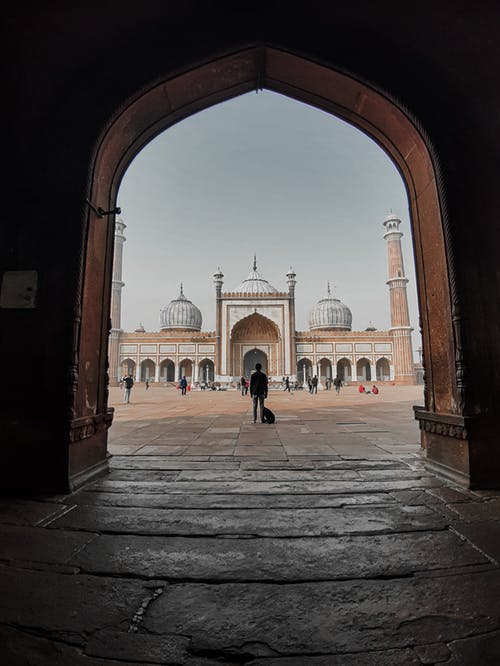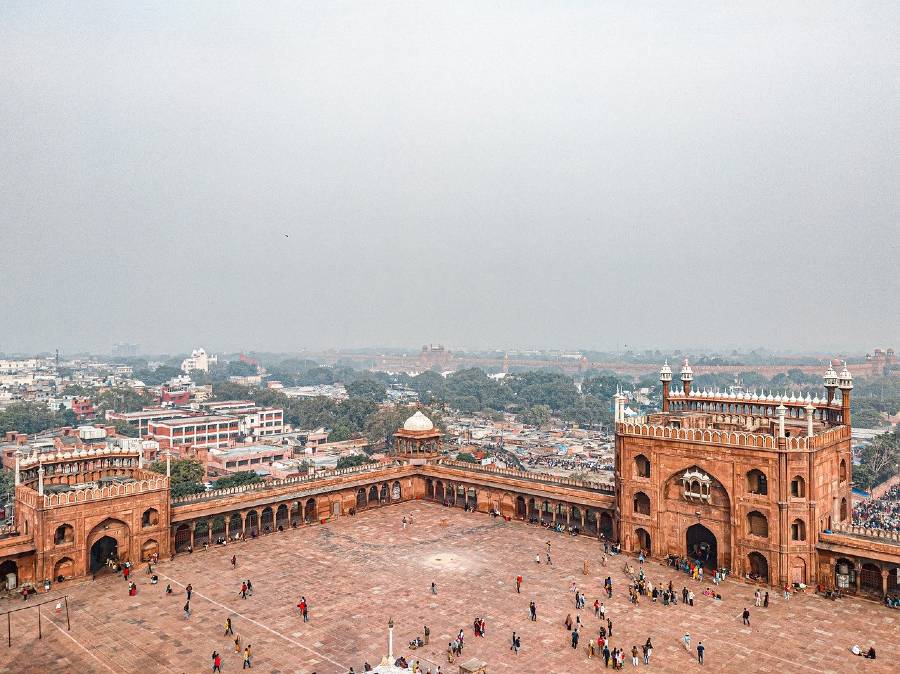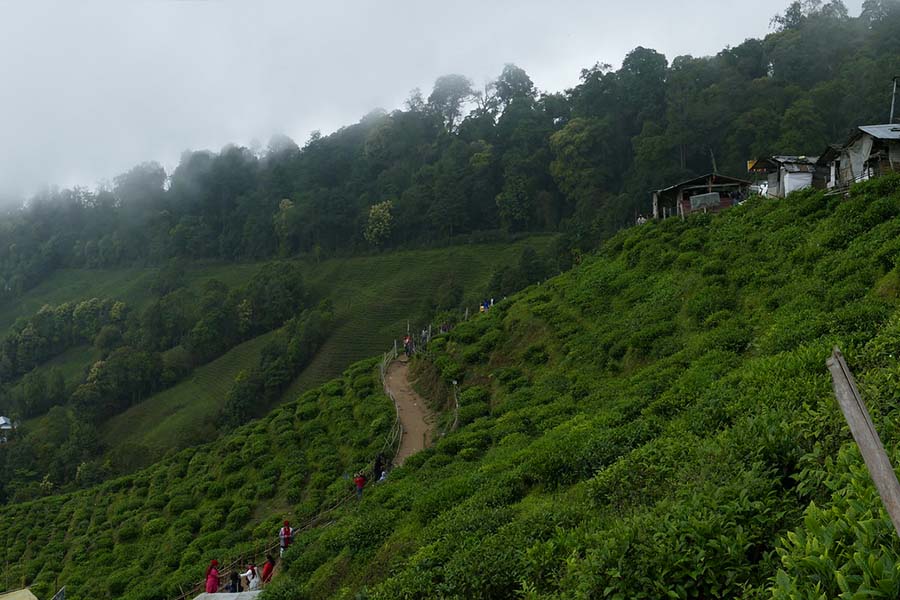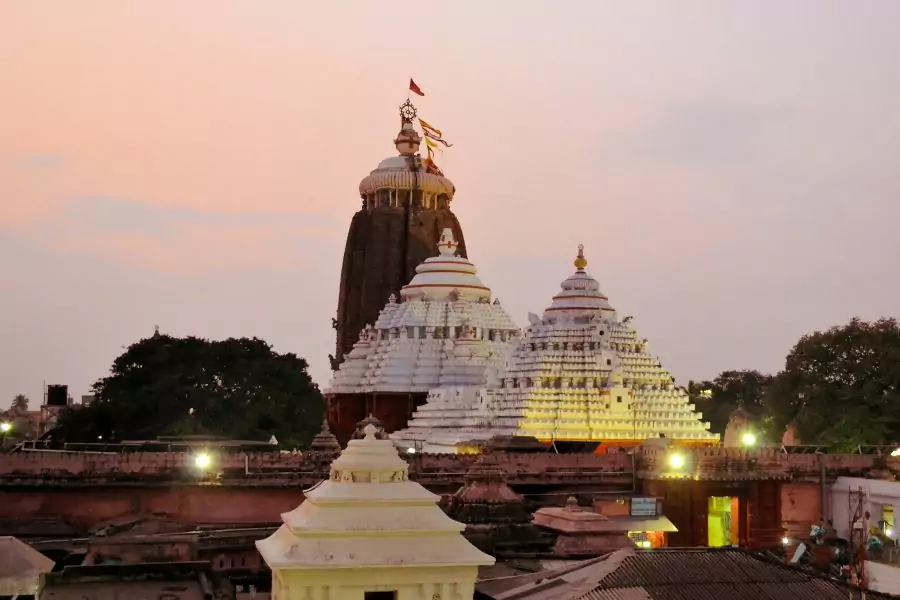Reasons see Jama Masjid
25,000 Reasons to see Jama Masjid, the Largest Mosque in India
Majestically rising not just from the high platform it stands on, the mosque was built on the Bho Jhala hill in the Mughal capital of Shahjahanabad, one of the 7 original cities of Delhi. Construction began in 1644 taking 5,000 craftsmen a mere 12 years to complete after Shahjahan moved his capital from Agra to Delhi. Its style is said to be the best of both Hindu and Islamic architecture. Amazingly, between the mosque and the vast paved courtyard, nearly 25,000 devotees can be held during prayer times. The final and fitting end of the Mughal Emperor Shahjahan’s extravagant building era can be seen in the magnificent Jama Masjid; A massive complex comfortably taking the title as the largest mosque in India. Properly referred to as Masjid-i-Jahan Numa meaning ‘the mosque commanding a view of the world’, today the landmark of India is a tourist ‘Must See” while in the city of Old Delhi.
The mosque has three gateways, four towers, and two minarets. It is constructed with alternate use of vertical strips of red sandstone and white marble, the latter used extensively in the three domes and also inlaid with stripes of black. The main prayer hall on the west is decorated by a series of high cusped arches, which stand on 260 pillars. These pillars support 15 marble domes at various elevations. The imposing gateways are approached through a broad flight of steps in the north and the south. The hallmarks of this famous mosque are the wide staircases and arched gateways.
Tourists of India traveling in the Northern region will find familiarity in the style and elegance of Jama Masjid. Shahjahan was responsible for many other well known Mughal era works here, such as:
- Jami Masjid, Ajmer, Rajasthan.
- Shalimar Gardens, Lahore, Punjab (Present day Pakistan).
- Moti Masjid, Lahore, Punjab (Present day Pakistan).
- Red Fort, Delhi.
- Agra Fort, Agra, Uttar Pradesh
- Taj Mahal, Agra, Uttar Pradesh.
Tourist Tips:

- It’s best to hire a guide to help navigate a visit as language barriers, religious customs, and prayer timings can be challenging.
- Cameras are permitted in non-prayer areas I.E. courtyard, outer facade, for a Rs 200 fee.
- Proper attire is required meaning no shorts, skirts, or sleeveless shirts.
- Heads must be covered, shoes removed and feet washed before entry.
- Entry through the Eastern gateway for the public is on Friday only. Otherwise, entry is through the Northern or Southern gateways.
- Entry into the south minaret is allowed for a Rs 20 fee. Women must be accompanied by a male. The views of Delhi make the climb up a narrow spiral staircase worthwhile. Be prepared for a crowd at the top.
- Hours: 8 A.M. – 12:15 P.M. / 1:45 P.M. – 1/2 hour before sunset. Closed 1/2 hr in the afternoon for prayers.
- Consider skipping the somewhat hokey tourist ritual of passing by the white shrine in the northeast corner. A collection of Muhammad’s relics are said to be here, watched over by followers who will, for some baksheesh, gladly show you the contents. Among them are two sections of the Koran, a red beard hair said to still be miraculously growing, and his footprint embedded in a marble slab (found in most mosques). It provides curious stares and a few giggles if nothing else.
Located right in the heart of Old Delhi by the huge bazaar named Chandni Chowk, visitors can easily reach the area’s fixtures via tuk-tuk, taxi, or bus. Car and driver services clamor for highly coveted parking spaces near the busy market. Be prepared for a quick drop-off near the gate. Plan on a bare minimum of 1 hour to properly see this locale. The sprawling Red Fort is nearby to the east. Hungry stomachs may want to catch a quick bite in the markets before moving on.
Things to do
Jama Masjid is a popular mosque located in Old Delhi, India. Here are some things to do when visiting:
- Explore the mosque: Take a walk around the mosque and appreciate its intricate architecture and grandeur.
- Attend prayer: Join the locals for prayer and experience the spirituality and devotion of the community.
- Climb the minaret: Climb to the top of the mosque’s minaret for a panoramic view of Old Delhi.
- Try the food: Jama Masjid is known for its delicious street food, so be sure to sample some of the local delicacies.
- Visit the bazaar: Located just outside the mosque, the bazaar is a vibrant marketplace where you can shop for souvenirs and traditional Indian clothing.
- Take a guided tour: Hire a local guide to learn more about the mosque’s history and significance.
- Watch the sunset: Visit the mosque in the evening and watch the sunset over Old Delhi for a beautiful and memorable experience.
How to reach
Jama Masjid is located in the heart of Old Delhi, India. Here are some ways to reach it:
- By Metro: The nearest metro station is Jama Masjid, which is on the Violet Line of the Delhi Metro. From there, it’s just a short walk to the mosque.
- By Bus: Delhi Transport Corporation (DTC) operates regular bus services to Jama Masjid from various parts of the city.
- By Taxi/Cab: You can also hire a taxi or cab to take you directly to the mosque.
- By Auto Rickshaw: Auto rickshaws are a popular and affordable mode of transport in Delhi. You can hire one to take you to Jama Masjid.
Note: If you’re driving yourself, be aware that Old Delhi can be quite congested and parking can be difficult to find. It’s often easier to use public transport.
Essential Information
Here is some essential information about visiting Jama Masjid:
- Location: Meena Bazaar, Jama Masjid, Chandni Chowk, Old Delhi, India.
- Opening Hours: The mosque is open daily from morning until late evening, but it’s closed to non-Muslims during prayer times.
- Dress Code: Visitors are required to dress modestly and cover their heads before entering the mosque. You can rent scarves and robes at the entrance if needed.
- Photography: Photography is allowed, but you should always ask for permission before taking pictures of people.
- Shoes: You will be required to remove your shoes before entering the mosque. There’s a shoe storage area inside the entrance, or you can bring your own bag to carry your shoes.
- Security: Visitors are required to go through a security check before entering the mosque.
- Etiquette: Visitors should show respect for the mosque and the Muslim community by not smoking or consuming alcohol on the premises. Visitors should also speak quietly and avoid any behavior that might be considered disrespectful or disruptive.
Note: Due to the COVID-19 pandemic, there may be additional safety measures and restrictions in place. It’s best to check with the local authorities before visiting.



